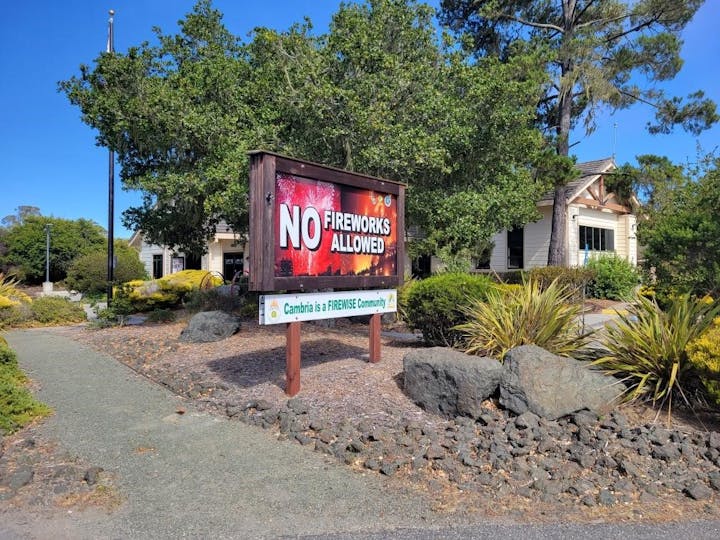Assess the Fire Risk of Your Home
Unfortunately in Cambria, there are many homes that are fire-prone because of the materials they are made of or the location of the home. The residents of those homes should plan to evacuate as soon as fire appears to be threatening the structure.
Residents of fire safe homes may be safer in their home than trying to drive elsewhere. If you live in a densely forested area, you should be concerned about having enough defensible space around your home, so that a fast-moving wall of flames would not make it to your home. If not, your home might be fire-prone.
If you live in a flat, un-forested area, you should be prepared for a rain of burning embers from a forest fire coming from miles away. You can make your home fire safe by making sure that nothing adjacent to your home could be ignited and avoid the fire spreading to your residence.
Here is a simple test to take in both forested and un-forested areas: Walk around the outside of your home and think about what would happen if a burning highway safety flare was dropped anywhere in your area. Would it catch grass on fire that would spread to a bush, which then would spread to a tree, which would ignite the tree and then spread under the eaves of your house? If it fell into that woodpile your neighbor has stacked against his house next to your house, would the fire spread from that house to yours? Many can change their fire-prone houses to fire safe by eliminating a fire path to their house.
Vegetation Control
Following are important tips in reducing vegetation to minimize fire risk to your home or business:
- Remove dead vegetation from the exterior of your home. In a flat area, there should be a minimum 30-foot clearance; in a steep or hilly area, 50 to 300 feet of clearance is necessary.
- Oil/resin filled plants such as Coyote Brush and Scotch or Irish Broom burn as if they're soaked in kerosene. They should be reduced or eliminated. Contact your nursery staff for a list of fire resistive plants.
- All trees over 20 feet in height should be limbed 6 feet up from the ground.
- Ground debris, grass, and other plants should be trimmed to a maximum of 4 inches. These should be disposed of by chipping or hauled to a green waste facility.
- Clear roofs and rain gutters of dead vegetation.
- Place woodpiles away from your home or business. Cover them with a heavy cotton tarp.
- Create a minimum 10-foot clearance around the wire from the electrical pole to your home.
- Place a 1/4 inch mesh spark arrestor around chimneys and clear tree limbs from within 10 feet. This will reduce the chance of burning embers from your chimney escaping and igniting a wildfire or a neighbor's home.
- Ensure all fuel containers or propane tanks have a minimum 10-foot fuel break around them.
Roof and Deck Protection
There are a number of ways you can protect your roof and deck from burning during a fire, including:
- If you plan to replace your roof, purchase a non-combustible one.
- Fire-resistant wood roofs do not stay fire resistant longer than 8 years.
- In a wildland fire, your wooden deck may catch fire first.
- Enclose the underside of your deck with fire-resistant materials.
- Place solid sheeting on your deck's surface so burning embers carried by the wind cannot ignite decking material, and especially the leaves and other materials that collect in the gaps.
- Install residential sprinklers under your deck that will activate the head(s) when a fire gets hot enough. These are inexpensive and can be installed by a plumber with a C-16 state license.
- Remove firewood and other combustible debris from under wooden decks.
- Keep combustible deck furniture away from your home.
Standby Generator Safety
Click on the links below to find out how to hook up a standby generator properly and operate it safely.
How to Hook up a GeneratorCorrect Use, Care and Operation of a Generator
